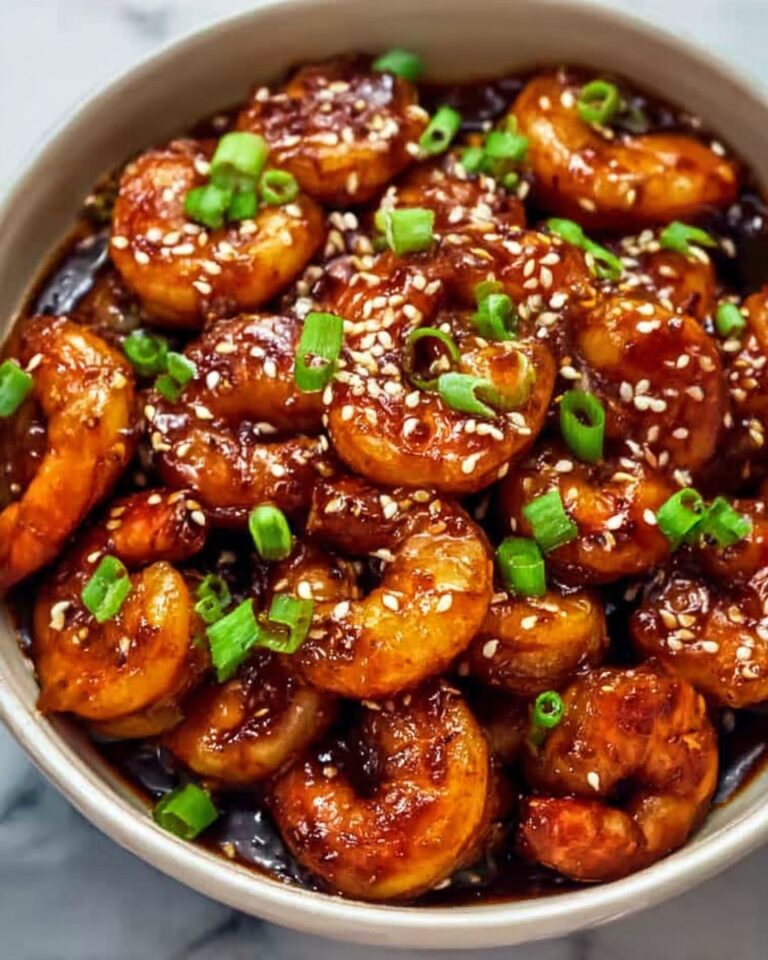Cleansing Winter Vegetable Miso Soup: An Incredible Ultimate Recipe
If you’re looking for a nourishing bowl that will warm you up from the inside out and leave you feeling refreshed, this Cleansing Winter Vegetable Miso Soup: An Incredible Ultimate Recipe is about to become your new favorite. It’s a vibrant, flavor-packed soup brimming with winter’s best root veggies, leafy greens, and creamy tofu, all simmered together in a savory miso broth. Each spoonful feels like a gentle reset for your body—comforting, colorful, and delightfully satisfying, no matter the weather outside!

Ingredients You’ll Need
The beauty of this soup lies in its simplicity—each ingredient brings something special to the pot, whether it’s earthy sweetness, a pop of color, or a layer of umami. Here’s what you’ll need for Cleansing Winter Vegetable Miso Soup: An Incredible Ultimate Recipe, along with tips to make every bite shine.
- Sesame Oil: Adds a toasty, nutty aroma that sets the foundation for the flavors.
- Garlic: Just two cloves add an irresistible punch that wakes up the whole pot.
- Fresh Ginger: Grated for zing and warmth, ginger also boosts the soup’s cleansing qualities.
- Yellow Onion: Thinly sliced onion softens and sweetens, building depth into the broth.
- Carrots: Their natural sweetness balances the savory miso and brings a bright orange hue.
- Parsnip: A subtle, slightly spicy counterpoint to carrots, perfect for winter vibes.
- Napa Cabbage: Adds tender crunch and soaks up the miso broth beautifully.
- Turnip: Mild and earthy, turnip cubes melt into the soup, giving it body and texture.
- Sweet Potato: Creamy and subtly sweet, these cubes offer a satisfying heartiness.
- Low-Sodium Vegetable Broth: The canvas for all your veggies—a good-quality broth makes a world of difference.
- White Miso Paste: The star of the show, bringing rich umami flavor and gut-friendly probiotics.
- Soy Sauce or Tamari: Enhances the savory notes—use tamari if you’re gluten-free.
- Rice Vinegar: Just a splash brightens the soup and balances all the flavors.
- Green Onions: Sliced for a fresh, sharp finish and a pop of green on top.
- Firm Tofu: Cubed tofu soaks up the broth and adds protein to keep you satisfied.
- Baby Spinach or Kale: Tossed in at the end for a boost of leafy green goodness.
- Salt and Pepper: Adjust to taste—remember, a little goes a long way after adding miso and soy sauce.
How to Make Cleansing Winter Vegetable Miso Soup: An Incredible Ultimate Recipe
Step 1: Sauté the Aromatics
Start by heating your sesame oil in a large pot over medium heat. Toss in the minced garlic, grated ginger, and sliced onion. Sauté for 2 to 3 minutes, stirring frequently, until everything is fragrant and the onion starts to soften. This quick step is where the magic begins—building a savory, aromatic base for the whole soup.
Step 2: Add the Winter Vegetables
Next, stir in your carrots, parsnip, turnip, sweet potato, and napa cabbage. Let the veggies cook for about 5 to 6 minutes, stirring every so often to make sure nothing sticks. As they soften, the vegetables release their flavors and start to mingle, creating a gorgeous medley of color and texture.
Step 3: Simmer with Broth
Pour in the low-sodium vegetable broth and turn up the heat to bring everything to a boil. Once it’s bubbling, reduce the heat to low and let the soup simmer gently for 15 to 20 minutes. You’ll know it’s ready when the root vegetables are perfectly tender—just right for a comforting spoonful.
Step 4: Mix in the Miso
This step is crucial for keeping all those beneficial probiotics alive! Ladle a bit of the hot broth into a small bowl and whisk in the white miso paste until smooth. Stir this mixture back into the soup (but don’t let it boil). The miso infuses every bite with umami depth and a hint of sweetness.
Step 5: Final Touches
Add in the soy sauce or tamari, rice vinegar, and cubed tofu. Give everything a gentle stir and let it simmer for just 2 to 3 minutes so the tofu heats through and soaks up the flavors. Then, toss in the baby spinach or kale, letting it wilt just enough to turn vibrant green. Season with salt and pepper to taste, and you’re ready for the finishing touches!
How to Serve Cleansing Winter Vegetable Miso Soup: An Incredible Ultimate Recipe

Garnishes
For the perfect finishing flourish, scatter sliced green onions over each steaming bowl. Try a sprinkle of toasted sesame seeds or a dash of shichimi togarashi (Japanese chili powder) if you like a little heat. These not only add color and crunch but also bring a fresh lift to the rich, savory broth.
Side Dishes
This soup is hearty enough to stand alone, but it’s even better when paired with simple sides. Steamed rice or a scoop of quinoa make it extra filling. For a Japanese-inspired spread, serve alongside pickled vegetables, a crisp salad with ginger dressing, or a few sheets of toasted nori for scooping up tofu and veggies.
Creative Ways to Present
Turn this soup into a showstopper by serving it in oversized mugs for cozy sipping, or ladle it into donburi bowls and top with a swirl of chili oil or microgreens. For a crowd, set up a DIY soup bar with extra toppings like kimchi, roasted mushrooms, or soba noodles so each guest can customize their own ultimate bowl of Cleansing Winter Vegetable Miso Soup: An Incredible Ultimate Recipe.
Make Ahead and Storage
Storing Leftovers
If you have leftovers, simply let the soup cool to room temperature before transferring it to an airtight container. It’ll keep beautifully in the fridge for up to 4 days, making it perfect for meal prepping and quick weeknight dinners. The flavors deepen as it sits, so tomorrow’s bowl might be even more delicious!
Freezing
Cleansing Winter Vegetable Miso Soup: An Incredible Ultimate Recipe freezes well, too—just leave out the greens and tofu until you’re ready to reheat. Pour the cooled soup into freezer-friendly containers, leaving some space for expansion. When you’re ready to enjoy, thaw overnight in the fridge and add fresh spinach or kale and tofu when reheating.
Reheating
To reheat, pour the soup into a pot and warm it gently over medium heat. Avoid letting it boil after adding the miso, as this can reduce the probiotics. If the soup has thickened in the fridge, just add a splash of broth or water to loosen it up. Taste and adjust the seasoning if needed, then serve hot with fresh garnishes.
FAQs
Can I use other vegetables in this soup?
Absolutely! This recipe is incredibly flexible. Try adding mushrooms, daikon radish, leeks, or even sliced bok choy for variety. The Cleansing Winter Vegetable Miso Soup: An Incredible Ultimate Recipe is all about using what’s fresh and seasonal.
Is this soup suitable for gluten-free diets?
Yes! As long as you use tamari instead of regular soy sauce, this soup is completely gluten-free. Always double-check your miso paste, as some brands may contain barley.
What kind of miso paste should I use?
White miso (shiro miso) is recommended for its mild, slightly sweet flavor, which works beautifully with winter vegetables. If you only have red miso, use a bit less and taste as you go, as it’s saltier and more intense.
Can I make this recipe ahead of time?
Definitely! The soup tastes even better after a night in the fridge, as the flavors continue to meld. Just wait to add the greens and tofu until you reheat, so they stay fresh and vibrant.
How can I make this soup more filling?
If you’re craving something heartier, stir in cooked soba noodles or a scoop of brown rice before serving. You can also double the tofu or add more root vegetables for a bigger appetite.
Final Thoughts
There’s something truly special about a dish that warms you up, nourishes your body, and brings a little sunshine to a chilly day. The Cleansing Winter Vegetable Miso Soup: An Incredible Ultimate Recipe captures all of that in one delicious bowl. I can’t wait for you to try it—let this soup become your new winter ritual!
Print
Cleansing Winter Vegetable Miso Soup: An Incredible Ultimate Recipe
- Total Time: 40 minutes
- Yield: 4 servings 1x
- Diet: Vegan
Description
This Cleansing Winter Vegetable Miso Soup is a comforting and nutrient-rich recipe perfect for detoxifying your body during the cold months. Made with a delicious blend of seasonal vegetables, miso paste, and tofu, it offers a hearty yet light vegan and gluten-free option that is simple to prepare and packed with probiotics and antioxidants.
Ingredients
Base Ingredients
- 1 tablespoon sesame oil
- 2 garlic cloves, minced
- 1 tablespoon fresh ginger, grated
- 1 small yellow onion, thinly sliced
Vegetables
- 2 carrots, peeled and sliced
- 1 small parsnip, peeled and diced
- 1 cup chopped napa cabbage
- 1 small turnip, peeled and diced
- 1 small sweet potato, peeled and cubed
Broth and Seasonings
- 4 cups low-sodium vegetable broth
- 2 tablespoons white miso paste
- 1 tablespoon soy sauce or tamari
- 1 teaspoon rice vinegar
- Salt and pepper, to taste
Finishing Ingredients
- 2 green onions, sliced
- ½ block firm tofu, cubed
- A handful of baby spinach or kale
Instructions
- Sauté Aromatics: Heat sesame oil in a large pot over medium heat. Add the minced garlic, grated ginger, and thinly sliced onion. Sauté for 2–3 minutes until fragrant and the onion becomes translucent.
- Add Vegetables: Incorporate the sliced carrots, diced parsnip, diced turnip, cubed sweet potato, and chopped napa cabbage into the pot. Cook for 5–6 minutes, stirring occasionally to lightly soften the vegetables.
- Simmer Broth: Pour in the low-sodium vegetable broth and bring the mixture to a boil. Once boiling, reduce the heat to low and let it simmer for 15–20 minutes until the vegetables are tender.
- Incorporate Miso: In a small bowl, whisk the white miso paste with a ladleful of hot broth until it forms a smooth mixture. Stir this back into the pot carefully to preserve the probiotics.
- Add Seasonings and Tofu: Stir in soy sauce or tamari, rice vinegar, and cubed tofu into the soup. Allow it to simmer gently for another 2–3 minutes.
- Wilt Greens: Add the baby spinach or kale and stir just until wilted, preserving their vibrant color and nutrients.
- Season and Garnish: Taste and adjust seasoning with salt and pepper if needed. Serve garnished with the sliced green onions for a fresh finishing touch.
Notes
- Do not boil the miso after adding it to preserve its probiotic benefits.
- Customize with seasonal vegetables like daikon, leeks, or mushrooms for added variety.
- For a more filling meal, add soba noodles or cooked brown rice.
- Prep Time: 15 minutes
- Cook Time: 25 minutes
- Category: Soup
- Method: Stovetop
- Cuisine: Japanese-Inspired
Nutrition
- Serving Size: 1 bowl
- Calories: 190
- Sugar: 6g
- Sodium: 580mg
- Fat: 7g
- Saturated Fat: 1g
- Unsaturated Fat: 5g
- Trans Fat: 0g
- Carbohydrates: 23g
- Fiber: 5g
- Protein: 10g
- Cholesterol: 0mg






